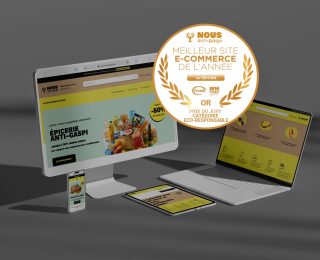
In the fast-paced world of eCommerce, launching quickly while ensuring a strong foundation is essential. Businesses looking to establish an online presence often face a key dilemma: invest heavily in a complex infrastructure from day one or start lean with a Minimum Viable Product (MVP) to test market traction first? At Sutunam, we advocate for the latter and especially in competitive markets where speed-to-market and adaptability are crucial.
The Case for an MVP: Launch Fast, Learn Faster
A fully developed, feature-rich eCommerce system takes time and significant investment. But does every business need a fully integrated ERP, CRM, AI-powered automation, and advanced shipping logic right from the start? The answer is no. Instead, starting with a lightweight, conversion-optimized MVP could allow companies to validate demand, fine-tune the user experience, and iterate based on real-world data before committing to a more complex system.
For Teazy, a premium tea brand in Vietnam, we executed this approach successfully. By leveraging WooCommerce, we built a fast, cost-effective online store that met immediate business needs while laying the groundwork for future scalability. (Check out the Teazy Case Study).
Choosing the Right MVP Tech Stack
1. WooCommerce: A Flexible & Cost-Effective Solution
For Teazy, WooCommerce proved to be the ideal choice, offering:
- Rapid Deployment: Minimal setup time with essential eCommerce functionalities.
- Ease of Use: A familiar backend interface that requires little training.
- Scalability: The ability to integrate new features as business needs evolve.
- SEO & Marketing Ready: Out-of-the-box tools for organic growth and customer engagement.
2. Headless CMS with Directus: Future-Proofing Your eCommerce
For businesses aiming for a more custom and scalable architecture, we highly recommend headless CMS solutions like Directus. These offer:
- Separation of Frontend & Backend: Enabling custom UI/UX without backend constraints.
- Faster API-Driven Performance: Optimized for omnichannel experiences (website, mobile, apps, marketplaces, etc.).
- Simplified Content Management: Non-technical users can manage content effortlessly.
Scaling from MVP to Full Business System
Once an MVP gains traction and data validates customer demand, businesses can transition towards a robust, fully integrated system. This includes:
1. ERP & CRM Integrations
A scalable eCommerce operation requires backend efficiency. Connecting APIs between eCommerce, Enterprise Resource Planning (ERP), and Customer Relationship Management (CRM) systems ensures:
- Automated inventory updates.
- Streamlined order processing and fulfillment.
- Personalized customer engagement and marketing automation.
2. Logistics & Shipping Optimization
For industries handling fresh or perishable products, logistics is critical. As an MVP evolves, integrating multiple shipping providers helps manage:
- Real-time tracking.
- Dynamic shipping rates based on location.
- Temperature-sensitive deliveries.
3. AI-Driven Automation & Smart Promotions
Artificial intelligence is revolutionizing eCommerce marketing. AI-based data-driven promotions use:
- Weather & Seasonal Trends: Suggesting warm drinks on cold days or iced teas in summer.
- User Behavior & Purchase History: Recommending tailored offers based on past purchases.
- Geo-Targeting: Adjusting promotions based on regional demand.
Conclusion: Start Small, Scale Smart
For eCommerce brands, the priority is getting online fast while ensuring a solid foundation for growth. Solutions like WooCommerce offer a quick, budget-friendly launch pad, while headless CMS options like Directus provide long-term flexibility. Once traction is established, integrating ERP, CRM, AI, and advanced logistics transforms an MVP into a powerhouse digital business.
If you’re looking to take your eCommerce idea to market quickly while ensuring long-term scalability, let’s talk. Sutunam specializes in building MVPs that grow into industry-leading platforms.


